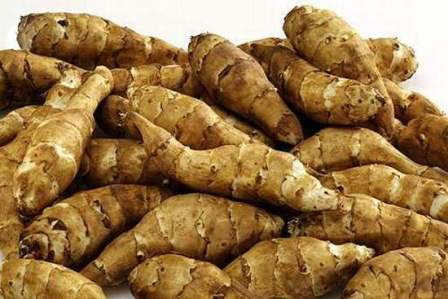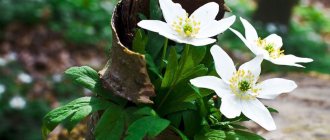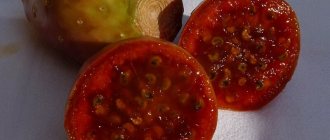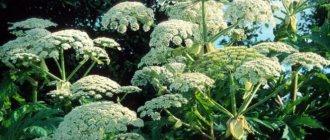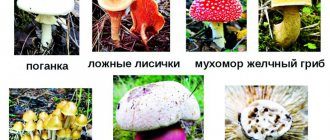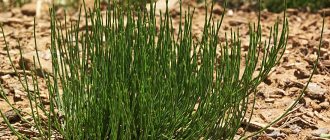Since time immemorial, people have fed on nature. The leading activity of ancient people was hunting and gathering.
Modern man can also feed himself from nature. After all, there are so many edible plants that are not difficult to find.
I have already written about edible forest plants and spring wild plants, but today we will talk about wild plants that can easily be found on the shore of any body of water or swampy place.
Cattail narrow-leaved and broad-leaved
Cattail is a perennial plant that can be found in shallow waters of rivers and lakes. A characteristic feature of cattail is a brown cob. The brown (or black) spadix is an inflorescence of female pistillate flowers.
Cattail fluff was previously mixed with rabbit fluff to make felt hats. Cattail was used as a covering material for the roof.
The stems were used to make ropes, weave baskets and mats (rugs). Paper was made from cattail wood.
The edible part of the cattail is the rhizome. Cattail rhizomes reach about 60 centimeters and are about 3 cm thick.
The dry rhizome contains 47 percent starch, 11 percent sugar and up to 30 percent protein.
Cattail rhizomes can be used to make flour, and the roots can be baked (tastes like asparagus). You can make a coffee substitute from cattail.
How to cook
We pull the cattail out of the soil, separate the root, dry it and grind it in a mortar (or on a stone). Knead like dough and bake, it turns out like flat cakes. You can make jelly from this flour (the root contains a lot of starch). Mix with forest berries and drink jelly). You can also eat young cattail shoots.
Umbrella susak (Yakut bread), wild bread, marsh susak
Susak is a plant 1-1.5 meters tall, with a bunch of linear, erect leaves. The plant has a straight stem with white and pink flowers sticking out in all directions, like the spokes of an umbrella. It grows everywhere, both in Siberia and in the Middle Zone.

Umbrella susak is a very common plant that can be found near almost any body of water. The edible parts are its roots, which are harvested in the fall or spring.
Irkutsk scientists who were involved in the study noted that swamp susak contains everything for human nutrition.
Composition of susak: it contains almost 60 percent starch, 14 percent protein and 4 percent fat (straight proteins, fats and carbohydrates)
Susak was prepared in Yakutia and even in Italy. Susak roots are dried and fried with lard (quite tasty, similar to potatoes). If the rhizome of susak is fried, it is an excellent substitute for coffee. The only difficulty in harvesting the plant is that it is harvested late in the fall or early in the spring. In order not to confuse susak with another plant, during flowering the plant is marked in some way (you can tie a cloth)
Common reed
The reed is tall like a cattail, but its stems are thin, like straws, green in color, and the leaves are bluish-green. At the top of the stem there is a panicle 30 cm long. Reed from the cereal family.

Reed has been used for a long time to cover roofs, and even fences are made from it. The edible parts of the reed are the root, which reaches a length of about two and a half meters. The rhizomes taste very tender and slightly sweet (raw rhizomes contain about 5 percent sugar).
Cane rhizomes can be consumed raw, boiled or baked. Reed also has medicinal properties; it is an excellent diaphoretic.
It is very convenient to extract reed rhizomes with a rake from a depth of up to 1 meter; you can make an impromptu cat out of nails. Reed blooms in July. Collect roots in early summer or late autumn.
Secrets of the composition
It is difficult to overestimate the role that root vegetables play in the life of every consumer. They are highly valued not only by vegans, but also by those who prioritize following healthy eating rules. There are certain fodder varieties that are grown to be fed to farm animals. To process them for livestock, you only need a simple feed cutter, because the products are given raw. Passing through a grinder does not strip them of their original nutritional value.
But the biologically active composition of each vegetable can vary depending on the species and other characteristics of the variety. An equally significant role here is played by the growing area and the technological approach to plant care before harvesting.
The average statistical components for root crops that are not affected by heat treatment include:
- about 90% water;
- amino acids;
- proteins;
- sugar-containing compounds;
- Omega-3;
- glycosides;
- phenolic substances;
- pectins;
- fiber;
- vitamins of group A, , , , ;
- minerals like potassium, sulfur, iron, silicon, phosphorus, cobalt, copper, boron.
Together, this made the underground parts truly beneficial for both adults and children. Their distinguishing feature is their low glycemic index. In practice, this means that the selected tuber will block a sharp increase in blood sugar, which will be a useful find for those prone to diabetes.
Thanks to the small amount of calories compared to foods of animal origin, vegetables of this type will become indispensable in the lives of those who strictly watch their figure. It’s not for nothing that most diet plans are based on fruits and vegetables.
Another advantage is the fact that their storage does not require special conditions. It is enough to simply move the supplies to a dark place that is well ventilated and maintains a low temperature there. Basements and cellars are ideal solutions for this.
Often examples of various tinctures and decoctions for ailments of any organ touch on the need to use root vegetables. Moreover, they are boiled, ground, squeezed out the juice and used in some other way not only for internal consumption. Some recipes include external use when it is necessary to get rid of extensive burns or open wounds. We should thank for this the antiseptic qualities, which have a beneficial effect on the regeneration functions of the affected organism.
But along with the enormous benefits, one should remember the possible harm. Often it concerns unscrupulous care of the future harvest, when unscrupulous gardeners add various chemicals to accelerate growth. Some even exceed the permissible dosage to achieve a good effect in a short time.
But even without this, ordinary carrots can “delight” with the presence of arsenic and strontium. Because of this, orange root vegetables should be purchased only in trusted places, so as not to purchase goods from an unfavorable ecological zone.
Overcome grass, White water lily
A perennial herbaceous aquatic plant that grows in reservoirs at a depth of 1 to 3 meters. The flower is white, plunges into the water at about 6 o'clock in the evening and emerges at about 7 o'clock in the morning.
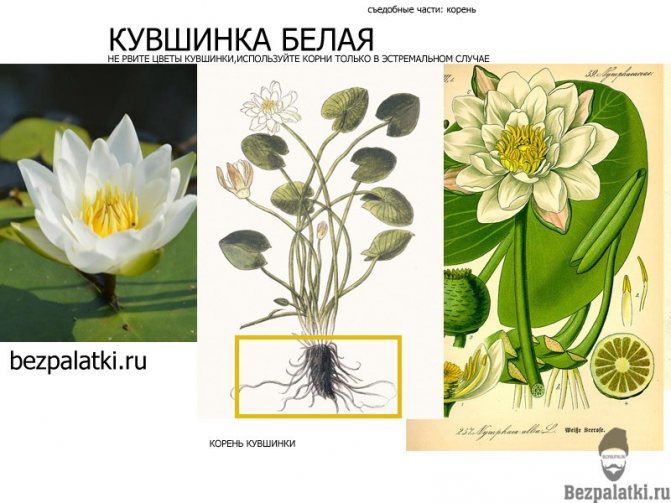
Water lily roots can only be eaten boiled and fried.
Poisonous in their raw form!
Dry the roots, grind them into powder and you can bake bread. But you should not pick the water lily without great need, there is not so much of it.
By the way, water lily roots stain fabrics brown. The roots of the water lily contain a lot of tannins and therefore before drying it should be soaked in water, often draining it.
Medicinal root vegetables
Among root vegetables you can also find many healthy products.
- Carrots are known to help with vision problems. Eating it daily helps prevent myopia and farsightedness. It also contains beta-carotene, which, when it enters the body, is transformed into vitamin A, and there is no need to talk much about its benefits.
- Horseradish is an excellent immune-boosting agent. In addition to this property, it is also a supplier of vitamins A and B to the body, and it also contains a large amount of zinc. phosphorus, calcium and potassium, each of which has specific benefits for various body systems.
- Celery is often consumed during various diets that promote weight loss. But not many people know that it has great benefits for the blood. It is also eaten to prevent diseases of the kidneys, liver and gastrointestinal tract.
- Black radish. Our grandmothers also had a recipe for a cough remedy: black rare with honey. This root vegetable also contains a lot of useful substances, and its consumption not only helps strengthen the immune system, but also helps in the prevention of kidney diseases, cardiovascular diseases, and cholelithiasis.
We recommend reading:
Sights of Albania
Common arrowhead (marshweed)
Common arrowhead (Bolotnik) is a perennial aquatic plant that grows near bodies of water in wetlands. The arrowhead is easily recognized by its original leaf, which is very similar in appearance to an arrow.

Arrow leaf is a medicinal plant; it contains a lot of minerals and beneficial substances. The root nodules, which form in the fall at the end of the shoots, are used as food. These nodules can be collected in autumn and spring.
The tubers are baked over a fire, boiled, fried. The chemical composition of arrowhead is very similar to regular potatoes, only not as watery. After eating arrowhead tubers, there is a slight (bitter) aftertaste in the mouth. You can dry and crush the tubers and bake them like bread. Tubers contain about 60 percent starch and 6 percent sugar.
Arrowhead has wound healing and astringent properties. Useful for stomach problems
Content of minerals in arrow leaf
Minerals
| Selenium | 0.7 mcg |
| Manganese | 0.36 mg |
| Copper | 171 mcg |
| Zinc | 0.28 mg |
| Iron | 2.57 mg |
| Phosphorus | 174 mg |
| Potassium | 922 mg |
| Sodium | 22 mg |
| Magnesium | 51 mg |
| Calcium | 10 mg |
Common duckweed
Duckweed is a perennial aquatic plant; it can be found in small reservoirs, swamps, and creeks. Duckweed forms a single green carpet. Duckweed is a very valuable nutritious and medicinal plant. Duckweed contains a lot of protein; the nutritional properties of this plant are close to those of cereals (wheat, oats...)

Duckweed is an excellent remedy for allergies (desensitizing properties), calms the nervous system, helps with malaria, and has antitumor activity. Duckweed contains a lot of iodine and bromine salts.
You can eat duckweed raw in the form of a salad. We rinse it thoroughly in water (although the smell will still remain) and eat it.
Duckweed recipes
Duckweed salad
Place onion rings on sliced boiled potatoes, sprinkle with chopped boiled egg and chopped parsley. Mix the washed duckweed with cabbage, place in the center of the plate, and pour sour cream on top. Product consumption:
- duckweed-30 g,
- onions - to taste,
- boiled potatoes - 1 pc.,
- sauerkraut - 50 g,
- sour cream,
- 1 egg
- salt and spices to taste.
Pasta with duckweed
Mix all the ingredients specified in the recipe and use the sandwich paste:
- duckweed-20 g,
- butter-20 g,
- grated horseradish - 2 teaspoons.
Meat cabbage soup with duckweed
At the end of cooking, add duckweed, spices, parsley, dill, onions or green onions to ordinary meat soup seasoned with cabbage and potatoes and boil for 3-5 minutes. Product consumption: duckweed - 10 g per serving.
Green cabbage soup with duckweed
Add sorrel and duckweed, minced in a meat grinder, sautéed carrots and onions, green onions, spices, parsley and dill to the cabbage soup 10 minutes before readiness. Before serving, top with sour cream. Product consumption:
- duckweed-30 g,
- sorrel-50 g,
- potatoes-100 g,
- onions or green onions - 40 g,
- sour cream - 20 g,
- dill - 10 g,
- salt to taste.
Edible roots and root vegetables
- Potatoes are undoubtedly the most famous of all root vegetables, especially in our country. In general, potatoes are a tropical plant designed for warm, humid climates. The bulk of nutrients are found in its tubers.
- Sweet potatoes may be called sweet potatoes, but they are not actually related. Externally, this root resembles a potato with a slightly sweet taste.
- Wild parsnip is a plant completely covered with hairs and spines and has yellow, rather hard flowers. It is customary to consume only parsnip roots, both boiled and raw.
- Earthen pear (also known as Jerusalem artichoke). The plant is somewhat similar in appearance to a sunflower and reaches a height of 1 meter. Only the roots of this plant are valued in the world for their nutritional properties. To prevent the roots from losing their value, they do not need to be cleaned.
- The American groundnut is a medium-sized plant with bright red flowers. It is widespread in the forests of North America. You can only eat very small tubers, fried or boiled.
- Potentilla goose is a rather squat plant and grows mainly in damp places. Potentilla roots can also be eaten raw, although it is recommended to cook them.
In addition to the nutritional properties of root vegetables, there are also beneficial functions. You can read the material about growing turnips in the country.
In modern medicine, the use of roots, tubers, and root vegetables in the preparation of various decoctions, powders and mixtures is widespread.
